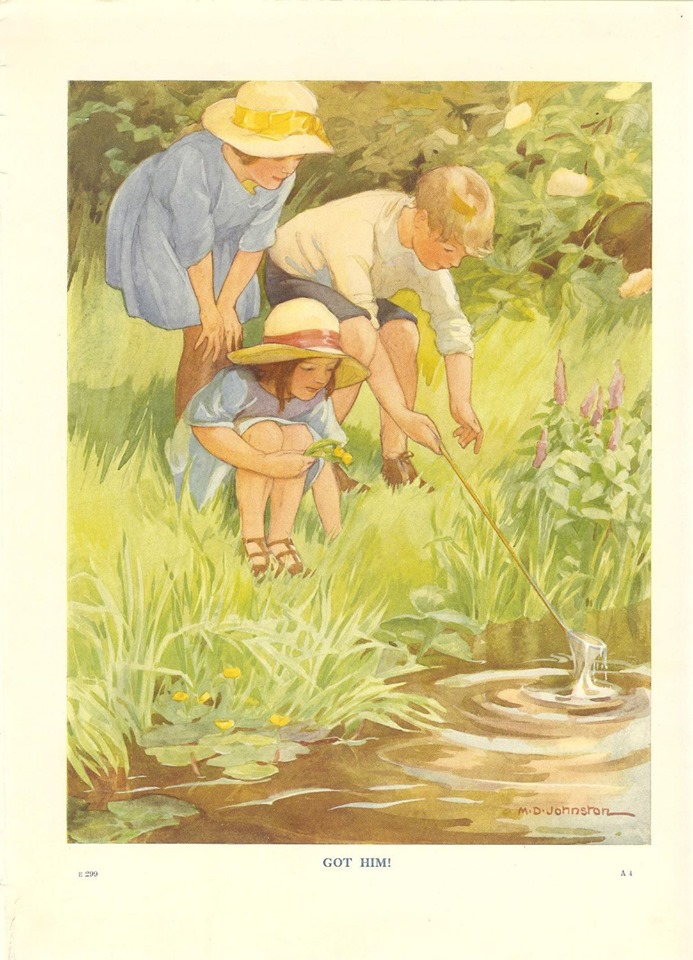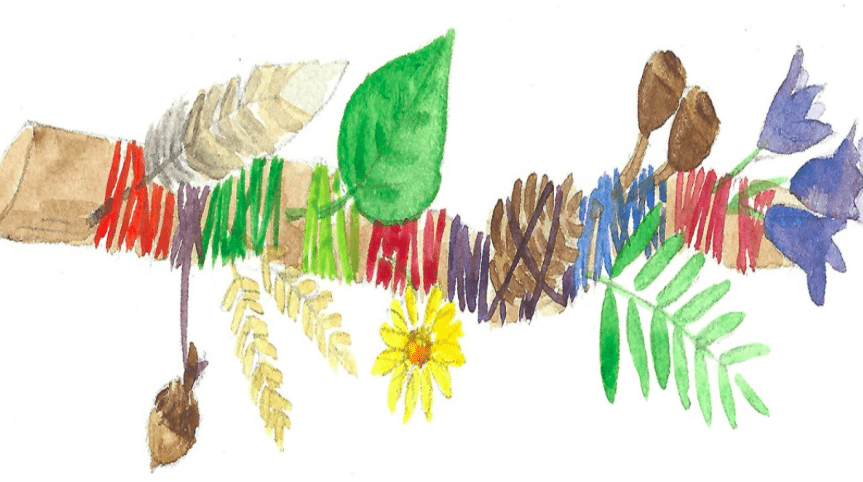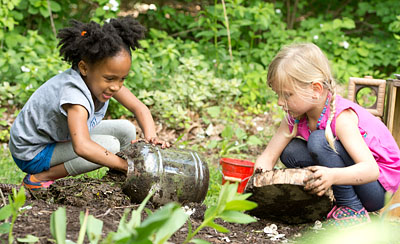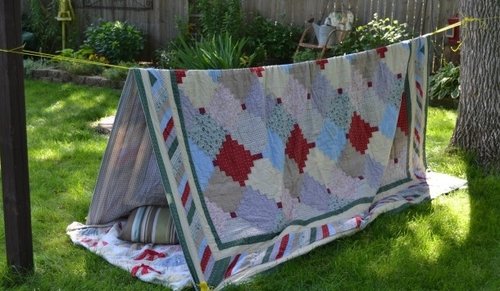May 13, 2020
A child, more than anyone else, is a spontaneous observer of nature. – Maria Montessori

Spring Outdoor Fun
“This is an excerpt of a weekly Curriculum Guide shared with families in the Honey Bee Nursery at Emerson Waldorf School, NC, during quarantine. Much gratitude to my early childhood colleagues for their inspiration and support.”
Submitted by Diana Stoycheva, EWS Nursery and Parent Child class teacher

Joy in Outdoor Play
“Stress reduction, greater physical health, a deeper sense of spirit, more creativity, a sense of play, even a safer life – these are the rewards that await a family when it invites more nature into children’s lives.” Richard Louv, Last Child in the Woods
Has it been a challenge to get your child and yourself motivated for the day in the morning? Are you in a bit of a rut with your mood and is your child grumpy to boot? Is it close to impossible to get your child excited to do anything, even for playtime?
Chances are you are in need of some more nature time added back into your daily rhythm! Experts say that even just 10 minutes in nature for children or adults can have a tremendous impact on your physical and emotional well-being.
The benefits of outdoor play are numerous! Children who play outdoors with regularity develop a sense of joy and confidence that promotes healthy growth and development. Angela J. Hanscom, author of Balanced and Barefoot, names three key factors not easily duplicated in an indoor environment.
– The outdoors offers a perfectly balanced sensory experience
Nature is inherently therapeutic. Sensory experiences in nature don’t overwhelm the central nervous system and instead promote a calm and alert state to better process the information and form an accurate picture of the world around us.
– The outdoors inspires the mind
Nature is an open-ended resource that stimulates children’s imagination and challenges their thinking: for example, a stone could become a buried pirate treasure, food for a bear, a piece of a castle wall, or a plate for a fairy. When children have free play outdoors, they become better problem solvers and their creativity is ignited.
– The outdoors is an ideal setting for evaluating risks and accepting challenges
In an outdoor environment, children build confidence, challenge themselves at their own pace, and learn to be adaptable.
Some outdoor experiences that engage the senses:
- Gardening with children
- Climbing trees
- Playing with sand, mud, water and varied natural materials
- Going barefoot
- Interacting with animals, insects and birds
- Cooking over an open fire
- Hiking
- Playing in the dark
“In every walk with Nature one receives far more than he seeks.” -John Muir
Weekly Activities

Journey Stick – This activity is based on the Aboriginal tradition of recording one’s travels. One could then relate stories of their journey about where each item was found, the significance of it, and feelings and thoughts that were experienced along the way.
Materials:
A sturdy stick
String/yarn or rubber bands
To Make:
Take a walk with your child, having them pick up items to attach to their stick as a memento of their nature walk. Easiest may be to wrap rubber bands around the stick in advance. Your child can slip treasure right onto the stick as they walk along.
Once home, remove the rubber bands and wrap the stick with string or wool to attach the items.

Mud Faces for Trees
When you go for a walk in the woods, if you open your eyes in just the right way, you may find that you see the tree spirits! What better way to encourage creative play than with some Mud Tree People? This fun activity engages your child’s imagination and senses.
Materials:
Mud, stones, nuts, berries, bright flowers, moss, grasses, sticks, or twigs
To Make:
Gather materials for the faces. Make a mud mixture with dirt and water in a bucket or in a hole in the ground. Gradually add the water until your mixture thickens to the right consistency. Let the children mix the mud with their hands. Children love squeezing and squelching mud between their fingers! Make a mud pie by forming a handful of mud into a patty, flattening it and plopping it onto a tree. It may take a few finger pushes around the edge to help it stick. Your child can decorate their mud face by using stones, nuts, berries, bright flowers, moss, grasses, sticks, or twigs.
Engage your child’s imagination to dream up a personality for the tree. Make plenty of mud; one mud face leads to another!

Clay Sculpture
Clay is a gift from nature for children! Luckily, here in NC, we can hardly get away from it. You see strips of bare, bright red, iron-rich earth exposed at new building sites, gardeners complain about the clay-heavy soil, and there are the iconic red brick buildings in historic Durham, some of which were built with local clay bricks as early as the 1880.
You won’t have to dig deep for beautiful red clay here! But if you are curious about how to make clay or aren’t from these parts, here is some great information about Processing Clay (click for link).
If you don’t have access to clay right now, it is worth a call to your local clay studio– they usually sell bags of clay and may be able to get you some.
In these parts, the simplest thing to do is, look for the tale-tale red earth, dig with a shovel, add a bit of water, and create! Air dry your finished clay masterpiece in the shade to prevent cracking for a few days and your work is done! Later, when quarantine is lifted, you can even bring your pieces to your local clay studio for firing and glazing for a beautiful finish.
Note: Allow your little one to fully experience the mud/clay process and dress them in clothes you won’t worry about. It’s great to wear rain pants for this activity!

Clay Animals
To Make:
Shape the clay into a ball and form the general head and body of your chosen animal. Try forming a duck, bird, worm, curled up cat or other that doesn’t have long delicate legs. You can always challenge yourself, because the beauty of clay is that you can re-wet and re-shape it as you wish!
Clay Fairy Dishes
To Make:
Start with a small ball and press your fingers into its center to form the concave shape of the dish. Smooth the edges if there is any cracking with a little bit of water. Dry.
Clay Beads
To Make:
Begin with a small ball and use a chopstick or other straight stick to poke a hole in the center of your bead. Smooth out. Dry.

Outdoor Fort or Tent
Many hours of joyful play can begin with creative house, fort and nook building. Imagine how it would feel to spend a morning in a palace like this one!
To Make:
Create a fort out of long sticks leaning against a tree, or tied together with string, like a teepee. Or tie rope between two trees and drape a large sheet and use chairs or more rope to drape and create a cozy tent. Place blankets and pillows inside for a magical play space.
If the weather doesn’t allow for outdoor fort building, there is no reason you couldn’t pull out your family camping tent and set it up in the living room for a day! My family has enjoyed many indoor camping trips and even “sleepovers”!
Further Resources
Video:
School’s Out– Forest Kindergarten Documentary (click for link)
Blog:
1000 Hours Outside (click for link)
Recommended Reading:
Last Child in the Woods: Saving our Children from Nature Deficit Disorder by Richard
Louv
Barefoot and Balanced by Angela J Hanscom
Play the Forest School Way by Jane Worrell and Peter Houghton
Diana was born in Bulgaria and received a Waldorf education in both Scotland and Pennsylvania. Diana studied Early Childhood education at Goddard College, Sunbridge College, Sophia’s Hearth and LifeWays. Diana has been a Waldorf Kindergarten, Nursery and Parent and Child class teacher for the last 15 years. In 2012, Diana opened a Waldorf early childhood home program on her family farm in Pennsylvania. She now lives with her daughter, husband, and assorted pets in North Carolina and teaches at Emerson Waldorf School. Diana is a fiber artist and doll maker, she loves gardening, beekeeping, plant dyeing, toy making and all things that inspire wonder in children and children-at-heart.
************************************************************************
Are you hoping to include more time outdoors in your early childhood program? Coming Soon from LifeWays North America — an online course focused on outdoor experiences in relationship-based care!
This is such an amazing resource. I will definitely incorporate many of these ideas into my program. Thank you for sharing!
Warmly,
Sara
My 72nd birthday was yesterday.
I cannot wait to go on our walk today and start a tradition with my husband. I also shared this post with my family and friends with little ( and big ) children.
Thank you so much.
Gerry Barry
A creative and fun way to give students a connection to nature. I like Journey Stick activity a lot! Thank you for sharing!
Kind regards,
Julietta